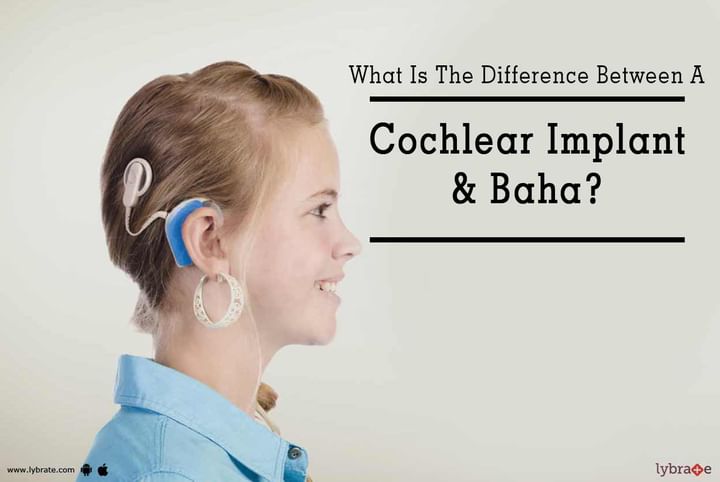What Is The Difference Between A Cochlear Implant & Baha?
BAHA Implant
Bone Anchored Hearing Aid (BAHA) is a device surgically implanted to help people suffering from a loss of hearing. Most conventional hearing aids transmit sound through air conduction. The BAHA device is suitable for conductive or mild-moderate mixed hearing loss.
Problems with hearing in the middle or outer ears can be helped with the BAHA device. The sound waves received by the BAHA device bypass the middle ear and get delivered straight to the functioning cochlea in both ears.
A BAHA device comprises of two parts:
- The processor
- A fixture which is surgically implanted behind the ear in the bone.
The implant is embedded in the bone. The processor, which remains outside, is attached to the implant. There is a microphone on the processor that picks up sounds. The sounds are passed on to the implant. The implant vibrates which triggers the Cochlear. You can consider wearing a BAHA implant if other conventional hearing aids do not work for you. BAHA implants are also given to people with collapsed or irritated ear canals.
A complex, small electronic device that helps to hear in people with severe hearing loss or deafness is used in the Cochlear Implant Surgery. The cochlear implant comprises an external piece behind the ear and another piece that is surgically implanted under the skin. A cochlear implant comprises of four parts:
- A microphone which picks up sounds from the surroundings
- A speech processor which chooses and arranges the sounds the microphone picks up
- A receiver/stimulator and transmitter that picks up signals from the speech processor and changes them into electric impulses
- An electrode ray, a bunch of electrodes, receives impulses the stimulator sends and transmits them to different areas of the auditory nerves.
The implant does not cure deafness; it only gives you a useful portrayal of sounds in the environment and considerable aid in understanding speech.
The surgery is done in the following way:
- The area around the site of the implant is shaved or cleaned
- The patient's vital signs are monitored through cables, patches and monitors attached to him or her
- General anaesthesia is administered through IV or through a face mask
- After the device is implanted, the patient is taken to the recovery room for the anaesthesia effect to lessen.



+1.svg)
